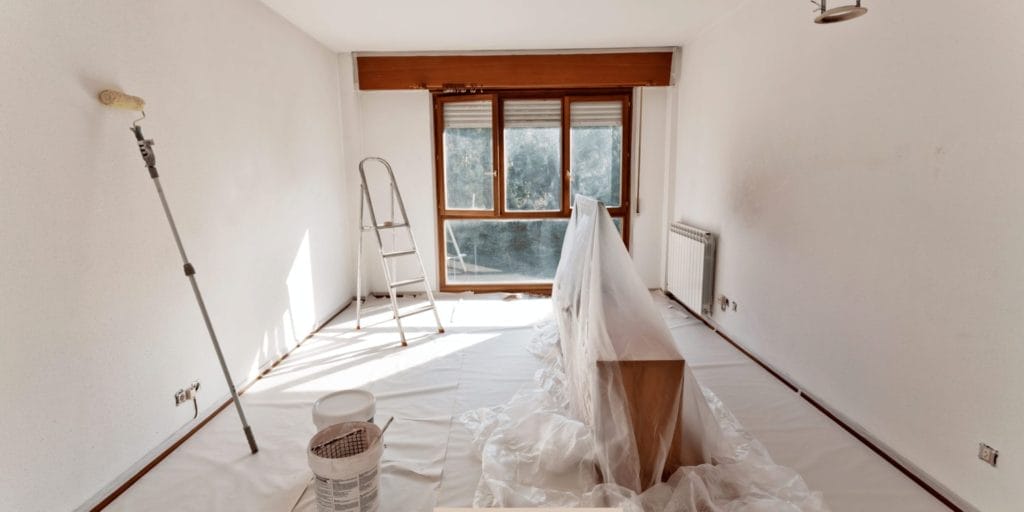Stucco home painting involves coating the exterior surface of the stucco home with paint, bringing a new look. As much as it may seem simple, painting stucco houses requires some preparation and an ideal painting procedure. It may be noted that painting stucco calls for other special features, unlike other exterior surfaces. This way, you will reach an excellent final result of a uniform, long-lasting painting of the house that will look like it’s in a movie.
Any time you are preparing to paint stucco, it is essential that you first evaluate the stucco to determine the condition of the stucco and any paint that might already be on it. Check for any dents, gaps, or signs of wear in the stucco surface, as well as any flaws in the stucco material. These will require scrapping before painting can be done on the walls or on the wooden siding of the house. It is also essential to assess whether there is any paint on the exterior surface that is already chalking, cracking, flaking, or peeling.
Prepare the Surface
In painting stucco, a good deal of time and effort must be dedicated to preparing the surface well to get the best results. To start with, apply the pressure wash on the house and the surrounding area to make sure that it is clean. This will wash off any dirt, mildew, or old paint that has chalked on the surface of the wall. If possible, search for any speck of grit, grease stain, or cobwebs, and wipe it off manually if necessary. Inspect the stucco for any cracks or holes and if there are any, then apply exterior spackle to fill the gaps. Permit all repairs to dry before proceeding to sand the affected area or surface.

Choose Your Paint
Choosing the right paint when painting stucco is as crucial as selecting the suitable material, and the recommended paint is 100% acrylic latex paint. It is also worth knowing that oil-based paints do not bend with the stucco surface, especially when the area is exposed to sunlight. Check the label to make sure the acrylic paint you choose is suitable for the masonry on the surface. Some general terms you may want to look out for include elastomeric, flexible, breathable, high build, and high hiding power. It is always advisable to apply a primer before painting so as to get an even finish, especially when touching up with bright or lighter colors over old dark ones. It is advisable to get enough paint that will cover the whole surface area of the house without having to mix paint from different cans for fear that they might slightly differ in color.
Painting Process
Follow these key steps when applying the paint:
1. Painting should be done in manageable sections, applying paint with a roller and ensuring that the painting process covers a large area and is done uniformly. Stucco has lots of grooves and textures, so you will require adequate paint to fill up the grooves and to come through the texture.
2. To enhance the appearance of the rolled paint, use a brush with almost an angle to flatten the paint surface right after moving the particular section. Blend out any roller marks or any thick paint that was applied during painting.

3. It is recommended to paint in two coats for the color schemes to come out more distinct. Avoid applying the second layer before the first one has been allowed to dry completely.
4. When painting large and tall structures such as those of multi-storied homes, paint from the top down. This prevents oil falling and spoiling the paint on walls below it, for instance.
5. If the new paint type permits, allow the final coat to dry for several days before exposing it to the new painted surface. Do not hang flowers or lean ladders against newly painted stucco surfaces.
Maintenance
The average expectancy on stucco paint jobs is around 5-10 years, depending on how the paint is taken care of. Make it a point to check on the painted surface once a year for new cracks or paint blistering, particularly around places that are prone to moisture, like under the eaves. If mold or mildew appear soon clean them because if not they will spread all over the place. Fix any hairline cracks as quickly as possible that you may notice on the stucco so that water cannot penetrate behind the paint. They are both a representation of the building’s quality indicating that a good stucco surface is necessary of a long lasting paint. When the paint starts to deteriorate, it is good to follow the instructions in preparing and applying the paint on the exterior of your home again.
To paint stucco surfaces, one needs to ensure that thorough preparation has been done before the actual paint job is done. Ensure you have invested enough time in pressure washing, scraping, sanding, and sealing the floor so that the paint adheres well when you are done painting the floor. Choose a high-quality 100% acrylic latex formulation designed for masonry and other similar applications. Only two coats must be applied with the proper drying time in between in order to provide adequate protection. Last but not least, inspect the surface and perform routine maintenance for the best outcome of painted stucco to last longer. Painting your stucco home for the first time is not difficult, but to ensure that the freshly painted stucco exterior lasts for several years, follow the above tips.
